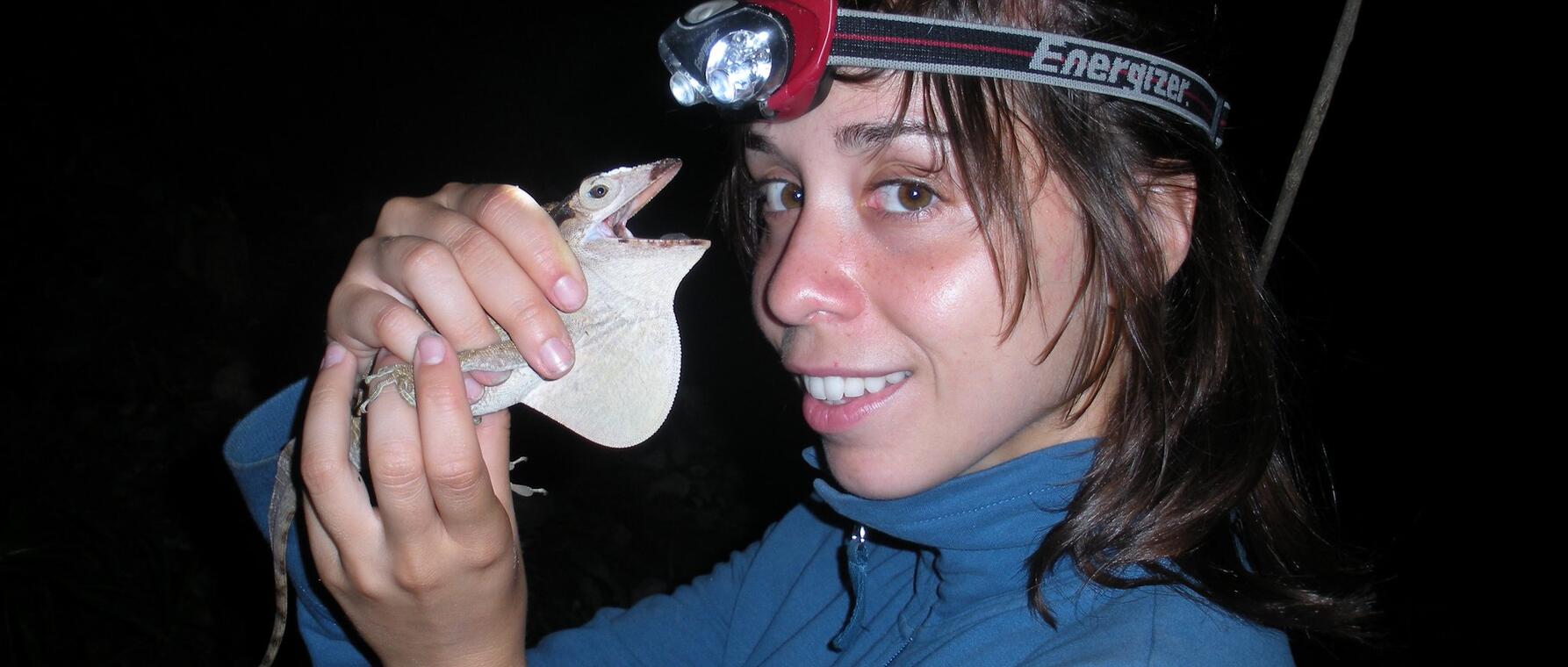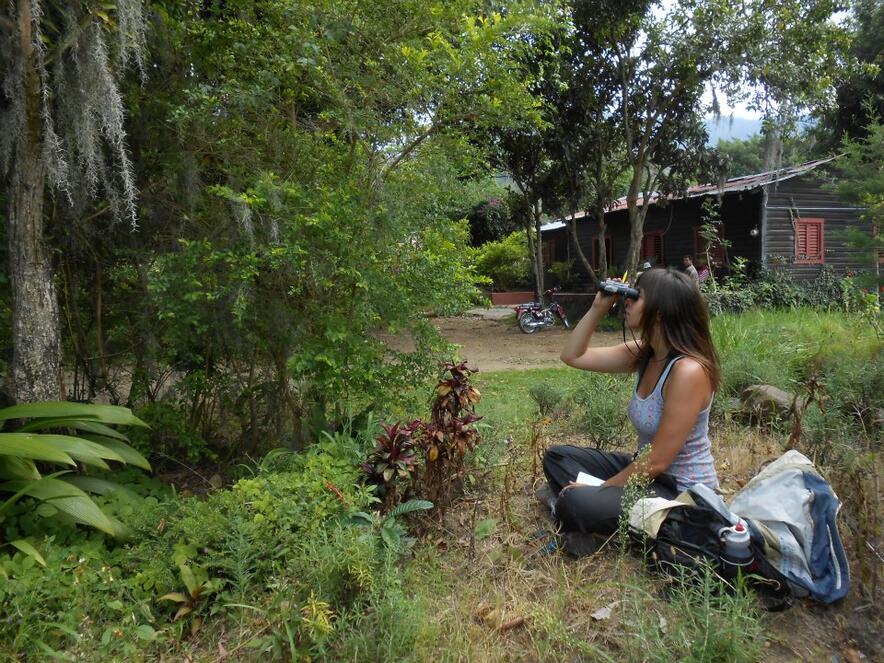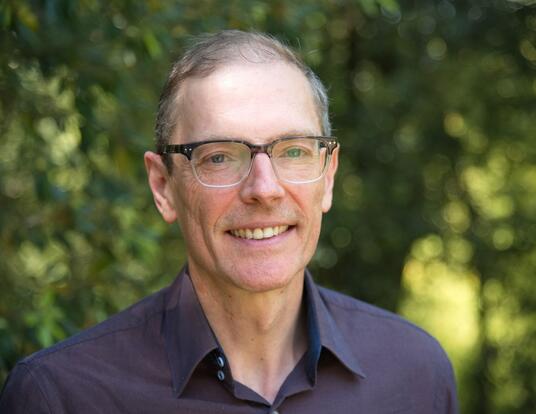A New Take on Natural Selection
How behavior shapes evolution

Research at Risk: Since World War II, universities have worked with the federal government to create an innovation ecosystem that has yielded life-changing progress. Now much of that work may be halted as funding is withdrawn. Find out more about the threats to medical, engineering, and scientific research, as well as how Harvard is fighting to preserve this work—and the University's core values.
Natural selection—the differential survivorship and/or reproductive success of some individuals relative to others—has been the bedrock of work by evolutionary biologists since the mid-19th century. But while it provided a mechanism that explained the changes revealed in the fossil record, the theory fostered by naturalists Charles Darwin and Alfred Russell Wallace yielded a new question: What allows some organisms to grow, survive, and reproduce, and others not?
“Since Darwin and Wallace, scientists have focused primarily on the role that the environment exerts on organisms,” says the evolutionary biologist Martha Muñoz, PhD ’14. “In this way, evolution has often been portrayed as a ‘one-way street:' organisms are at the mercy of natural selection.”
An assistant professor of ecology and evolutionary biology at Yale University, Muñoz is adding nuance and a new frame to the way that scientists understand selection. Through a mix of fieldwork and laboratory experimentation, Muñoz is gaining insight into how species’ behavior and physical traits shape the speed, scope, and manner in which evolution occurs. Her research reveals more back and forth between organisms and their environment in the selection process than is often assumed, with implications for how we understand the impact of climate change on the natural world.
A Two-Way Street
To illustrate the conventional thinking on evolution, Muñoz points to the landmark research of Princeton University scientists Rosemary and Peter Grant in the Galapagos Islands. “They found that, following a drought, finches with very small beaks perish. Those with thicker beaks that can access remaining hard seeds survive. So, the next generation of birds has thicker, broader beaks. It’s a classic example of natural selection acting on an organism through environmental pressure.”

Muñoz’s work adds a new dimension, revealing that organisms are endowed with the capacity to shape not just the types of selection they experience, but also the intensity of that selection through their behavior. “Simply by altering when they're active, where they're active, and who they interact with,” Muñoz says, “organisms can often shield themselves from natural selection. Conversely, organisms can also expose themselves to natural selection by interacting with new resources and entering new environments, accelerating evolutionary change. It's very much a two-way street.”
Take the anole lizards of the Caribbean. Tropical by ancestry, the reptiles are not only found in warm sea-level habitats but also at high elevations, where the temperatures are colder even during the day. In a 2018 paper for The American Naturalist, Muñoz and former Harvard professor Jonathan Losos wrote that the mountaintop lizards forestall physiological evolution by recreating the daytime habitats reminiscent of their lowland ancestry.
“Instead of perching on tree trunks, which are simply too cold, they bask on these sun-soaked rocks,” Muñoz says. “So, physiological traits under selection when the environment is warmest—such as their heat tolerance—all of these are being behaviorally buffered by this simple shift in habitat use. With very limited exception, the physiology of the lizards at high elevation is identical to those at sea level.”
At night, however, temperatures in the mountains plunge. Inactive with no sunbaked rocks the anoles have no refuge from the cold. In this case, the lizards’ behavior actually exposes them to physiological selection.
“The anoles' cold tolerance adjusts, getting progressively greater with elevation,” Muñoz explains. “They adjust that lower boundary for activity so they can still have mobility at colder temperatures and not be as vulnerable to predators. The only aspect of their physiology that has adjusted to the cold is the one trait they can't behaviorally buffer, so it gets exposed to selection and does evolve. This difference in evolutionary rate between cold and heat tolerance provides an internal check that we are, in fact, isolating the role of buffering behavior on physiological evolution.”
Simply by altering when they're active, where they're active, and who they interact with, organisms can often shield themselves from natural selection.
— Martha Munoz, PhD ’14
Assistant Professor of Ecology and Evolutionary Biology, Yale University
The anoles Muñoz observed also provided another example of the way that organisms’ behavior can accelerate evolution. Traditionally, the lizards are stocky with long hind limbs good for perching on tree trunks and dashing to snag prey on the ground. At higher elevations, though, the anoles abandon trees for the warmth and protection of boulders, where shorter hind legs and flatter skulls enable the reptiles to skitter into the rocks’ cracks and crevices.
“They have, in the truest sense, become boulder-dwelling lizards,” Muñoz says. “Dorsoventral compression—a flattening of the body—eases access into the tight crevices they occupy. So, while thermoregulation may slow down selection on physiology, the lizards have behaviorally accelerated selection on ecomorphology—body shape that matches their ecological niche.”
Caroline Williams, the John L. and Margaret B. Gompertz Chair in Integrative Biology at the University of California, Berkeley, says that Muñoz’s work is an “outstanding example” of integrative biology, incorporating the interaction between behavior, morphology, and physiology in determining evolutionary trajectories.

“Martha’s work on anoles has demonstrated that animals actively shape their selective environments through their thermal preferences, rather than being passive recipients of environmental change,” she says. “This illustrates vividly that behavior mediates forces of natural selection and can either accelerate or slow evolution. This work has opened up a new area of evolutionary biology, compelling a more nuanced understanding of the complex interplay between behavior, morphology, and physiology.”
Losos, now a professor at Washington University in St. Louis, says his former Harvard Griffin GSAS advisee’s research reframes the traditional conversation on natural selection.
“Martha has shown that a longstanding debate—does behavior constrain evolution or propel—is misguided,” he says. “Behavior can do both simultaneously! Obvious in retrospect, this is a novel idea that is quickly gaining traction.”
Good News and Bad on Climate Change
While much of Muñoz’s work is retrospective, looking back in time, it could also influence the kind of predictions scientists make about the way organisms will respond to selective pressures in the future—a question that becomes more relevant as climate change accelerates.
“We’ve been tracking several anole lizard species over the past decade and assessing how they’re responding to higher temperatures,” she says. “We found that some species use thermoregulatory behavior to buffer rising temperatures, and that other species are keeping pace with warmer temperatures through physiological adjustment.”
[Martha’s] work has opened up a new area of evolutionary biology, compelling a more nuanced understanding of the complex interplay between behavior, morphology, and physiology.
— Caroline Williams
John L. and Margaret B. Gompertz Chair in Integrative Biology, University of California, Berkeley
Lizards that can thermoregulate are finding cooler temperatures in warmer habitats. Lizards in closed-canopy forests, however, are poor thermoregulators because their habitats don’t provide abundant access to sun and shade. “Without behavioral buffering at their disposal, these closed-canopy habitat species have become more heat adapted in response to selection,” Muñoz explains. “So, lizards use behavior as their first line of defense against rising temperatures, but if they can’t, then they adapt.”
Behavioral buffering and adaptation are hopeful signs in the face of a warming climate. Nevertheless, Muñoz says that many species may be on borrowed time.
“Anole species are now exhibiting heat tolerances as high as have ever been observed in the lineage,” she says. “It's unclear how much higher they can go from here. And their capacity to thermoregulate is only as good as their ability to find shade. As the climate gets warmer, organisms are also progressively losing habitat as agricultural and human expansion marches on.”
While potentially groundbreaking, Muñoz’s conclusions on the capacity for behavior to have a direct impact on evolution cover only a handful of lineages, systems, and locations. To find out whether the observations are generalizable, her lab at Yale studies many different organisms, from lizards to mantis shrimp, frogs, fishes, and even plethodontid salamanders, lungless amphibians that breathe through their skin and live in niche microhabitats in the Appalachian Mountains.
“The big question for us is, can we scale the research up?” she says. “Under what circumstances can organisms use behavior to blunt the force of selection? Under what circumstances can't they? Are those circumstances generalizable across geography, across phylogeny, across lineages, space, and time? For example, are the factors favoring behavioral buffering the same for amphibians when it comes to hydroregulation as it is for lizards when it involves thermoregulation? These are the types of questions we’d like to answer.”
Muñoz’s efforts got a big boost this fall when she received a fellowship from the John D. and Catherine T. MacArthur Foundation. Often referred to as a “genius grant,” the fellowship provides $800,000 in “no-strings-attached” funds over five years, giving Muñoz the capacity to think big, take risks, and spend time collecting the data that makes for robust theory. “It's how academia is supposed to work,” she says. “I’d like to take the time to thoughtfully develop these ideas and scale them up across the tree of life.”
“The big question for us is, can we scale the research up? Under what circumstances can organisms use behavior to blunt the force of selection? Under what circumstances can't they?
— Martha Munoz, PhD ’14
Assistant Professor of Ecology and Evolutionary Biology, Yale University
Thomas Near, a professor in Yale’s Department of Ecology and Evolutionary Biology, says that his colleague’s research “highlights the agency individual organisms have in shaping their interactions with the environment through behavior and physiological change.”
“Martha’s work has helped identify the factors that speed up and slow down evolutionary change, which is why she often speaks of the ‘brakes and motors’ of evolution—a wonderful metaphor,” Near says. “It shows that behavior is not only a set of phenotypes shaped by evolution, but also that behavior itself can shape evolution.”
Muñoz says that her research is not meant to undermine the power of natural selection in evolution but to reposition organisms at the center of that process. “Natural selection isn't something that just happens to organisms,” she says. “They have capacity in that process. So, it’s a bit of a reframing of what we think to be true about nature.”
Get the Latest Updates
Join Our Newsletter
Subscribe to Colloquy Podcast
Simplecast





